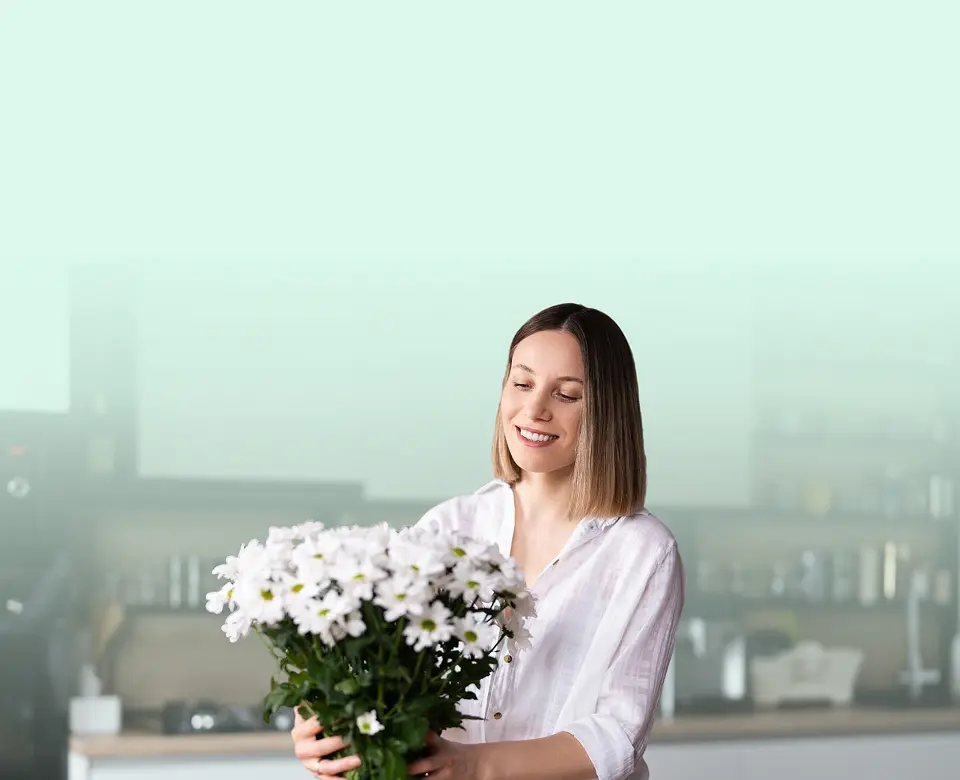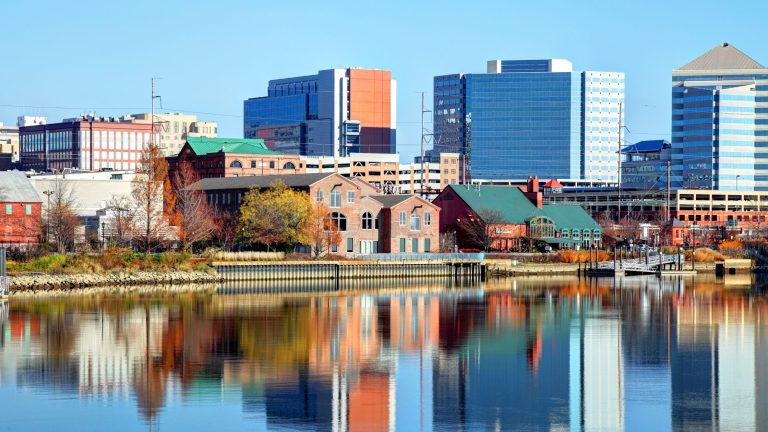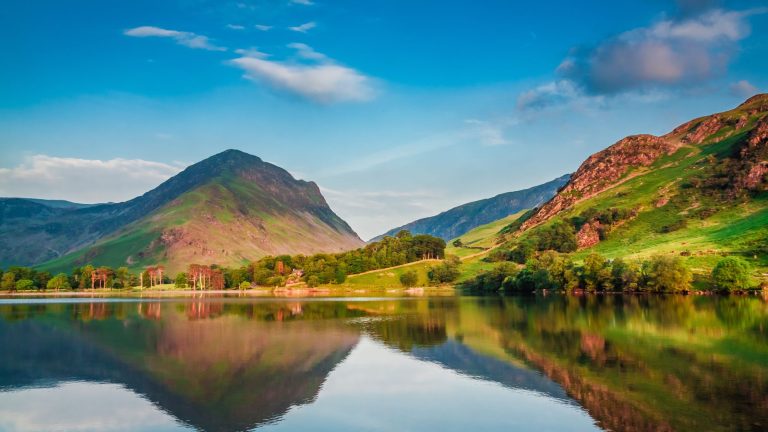Slovenia’s Lakes Through the Seasons
September emerges as the undisputed champion for family visits to Slovenia’s alpine lakes—offering warm 20°C water temperatures, 40% fewer crowds than peak summer, and the full spectrum of activities from swimming to high-altitude hiking, all while autumn colors begin painting the Julian Alps in amber and gold.
This sweet spot balances ideal conditions for both “Explorer Families” seeking active adventures and “Legacy Gatherers” planning multi-generational reunions, with accommodation prices 20-30% below July-August peaks and every major attraction operating at full capacity.
Slovenia’s lake region—anchored by iconic Lake Bled and pristine Lake Bohinj—transforms dramatically across seasons, creating distinct windows of opportunity that savvy families can leverage for extraordinary experiences ranging from floating 15,000 candles on emerald waters during July’s Bled Days Festival to cross-country skiing across frozen Lake Bohinj in winter, the only alpine lake in Slovenia where ice skating remains permitted.
The lakes themselves tell different stories across the calendar
Lake Bled, Slovenia’s postcard jewel perched at the Julian Alps’ edge, maintains water temperatures above 20°C from late June through August, peaking at 21-24°C when thermal springs beneath the surface help create some of the warmest alpine swimming conditions in Central Europe.
The iconic 6-kilometer lakeside circuit remains accessible year-round, though the character shifts dramatically: summer brings throngs of visitors queuing for traditional pletna boats rowed by hereditary oarsmen whose families have held exclusive lake rights since 1590, while winter occasionally delivers the rare spectacle of the lake freezing solid enough for impromptu ice skating beneath the medieval castle perched 130 meters above on limestone cliffs.
Lake Bohinj, 25 minutes deeper into Triglav National Park, offers a more contemplative alpine experience with its 11.35-kilometer shoreline and backdrop of Mt. Triglav’s 2,864-meter peak. The lake maintains similarly warm summer temperatures of 20-25°C in July and August, but distinguishes itself as Slovenia’s only mountain lake where ice skating is officially permitted when winter conditions allow.
The Vogel cable car operates year-round from Ukanc, whisking families 1,000 vertical meters in four minutes to access everything from summer hiking trails to 22 kilometers of natural-snow ski slopes operating November through May—one of Slovenia’s longest ski seasons thanks to its position within the national park where artificial snowmaking is forbidden.
Lake Jasna, a smaller emerald gem near Kranjska Gora created at the confluence of two alpine streams, serves families seeking peaceful alternatives to Bled’s summer crowds. Despite frigid water temperatures even in peak summer, its white-sand beaches, three-level diving platform resembling a castle turret, and the famous bronze Zlatorog statue draw families for the 15-minute walking circuit and stunning mountain photography, particularly at sunrise, when Mt. Razor and Mt. Prisojnik reflect in glassy waters.
Month-by-month conditions reveal strategic planning opportunities
Winter’s alpine majesty (December-February) brings average highs of just 1-7°C and water temperatures of 3-4°C, but transforms the region into a winter sports paradise. Vogel Ski Resort operates at peak capacity with ski school programs specifically designed for families, while Bled’s Park Café outdoor ice rink offers skating with castle and lake views. The Bled Winter Fairy Tale Christmas market (November 28, 2025, through January 4, 2026) features daily programming, including Sunday children’s events and a special New Year’s Eve celebration for kids.
On February 8th, a national cultural holiday, museums and galleries across Slovenia open their doors with free entry and kid-friendly workshops. In Ljubljana, expect family tours and special programs—an easy, wholesome day centered on learning and the arts. You can also take advantage Slovenia’s thermal resorts which run family-oriented programs year-round. You can enjoy indoor water parks, animation for children, and multi-day family packages at places like Terme Čatež (Winter Thermal Riviera) and Terme Olimia (Family Wellness Termalija). Think restful, screen-free time together.
Spring’s awakening (March-May) sees temperatures climbing from 7°C in March to 17-21°C by May, though lake water remains cold at 7-14°C. The International Wild Flower Festival (May 22 – June 7, 2026) celebrates Bohinj’s 1,000+ plant species, including endemic Zois’ Bellflower and the rare Julian Poppy, with guided botanical walks, foraging workshops, and three-course meals prepared from wild plants.
This period offers exceptional value—accommodation prices sit 20-30% below peak, crowds remain manageable, and lower-elevation trails become accessible while higher routes still carry snowmelt-fed waterfalls at maximum drama. The FIS Ski Jumping World Cup Finals at Planica (March 26-29, 2026) provide a spectacular sporting finale to the winter season.
Summer’s abundance (June-August) delivers everything families seek: water temperatures reaching comfortable 20-23°C for swimming, all 41 mountain huts open for backcountry exploration, and the region’s richest cultural programming. But July and August exact a price—visitor numbers swell so high that Lake Bled’s walking paths become “completely clogged” mid-day, pletna boats sell out, and accommodation requires booking months ahead at peak prices of €314-462 per night for quality hotels.
The magic Bled Days Festival (fourth weekend of July, likely July 24-26, 2026) culminates Saturday evening when 15,000 handmade candles in eggshells float across the lake while fireworks illuminate the island church and castle—the region’s most photogenic moment, but also its busiest. The Bohinj Summer Music Festival runs five consecutive Thursdays in late July and August, featuring international classical musicians in the architecturally stunning St. Martin’s Church.
Autumn’s golden window (September-October) represents the informed traveler’s secret. Early September sees air temperatures of 18-20°C and water temperatures of 16-20°C, warm enough for swimming, while crowds thin dramatically as European schools resume. The September 20 Cow Ball at Lake Bohinj’s Ukanc celebrates the seasonal return of decorated cattle from high alpine pastures with traditional alpine sports, folk dancing, and authentic mountain culture—Slovenia’s most unique festival that bookends summer.
By October, temperatures drop to 12-13°C, and most swimming ceases, but the compensation comes in the form of stunning fall foliage that transforms valley forests into copper and gold, with the October 24 Bohinj Cheese and Wine Festival showcasing mountain-aged cheeses alongside Slovenian wines.
Transportation logistics favor family efficiency over romantic notions
Ljubljana serves as the unavoidable gateway, positioned 35 miles and 45 minutes from Lake Bled via excellent highways. Ljubljana Jože Pučnik Airport is just 38 kilometers from Bled, making direct transfers via GoOpti shuttles (€20-35 per person, shared; higher for private) the smoothest option for families with luggage and children. Public buses from Ljubljana’s main station to Bled run hourly (€5.70 one-way; children 7-15 pay €2.85) with a 1 hour 19 minute journey time, while trains to Lesce-Bled station require an additional 4-kilometer transfer to the lake.
Families planning serious exploration should rent vehicles at Ljubljana Airport, where companies like ATET offer economy cars from €35/day and proper family SUVs from €50/day. The investment pays dividends: accessing Lake Bohinj’s best trailheads, reaching mountain villages for authentic agriturismo lunches, spontaneously visiting Vintgar Gorge at 8:00 AM opening to beat crowds, and maintaining flexibility when traveling with children ages 7-10 who might need unplanned stops. Child seats cost €9/day, though families often prefer to bring their own. Winter driving (November 15-March 15) requires winter tires, which rental companies include automatically.
The Bohinj Mobility Card deserves attention for sustainable multi-day stays: just €2 for 24 hours of unlimited local bus travel, with children 0-14.99 traveling free when accompanied by an adult. The Julian Alps Cards (summer: April 1-November 15; winter: November 16-March 31) bundle transportation with attraction discounts for 3, 5, or 10-day periods, offering reduced prices for guests arriving by public transport—a genuine incentive for car-free travel.
Tour operators range from heritage specialists to adrenaline purveyors
Slovenia Explorer/Gray Line Slovenia operates the bestselling “Slovenia in One Day” tour (€125), combining Postojna Cave, Predjama Castle, and Lake Bled—efficient for time-constrained visitors but necessarily superficial. More sophisticated operators like Slotrips offer guided walking day trips to both lakes, with flexibility for photography and family pacing, while Slovenia Holidays creates dedicated family packages, including 3-day and 5-day Lake Bled Family Holidays, with age-appropriate activities pre-selected.
Adventure specialists cluster around specific activities: 3glav Adventures pioneered clear kayaking on Lake Bled with transparent boats revealing underwater lake features; Altitude Activities designs family canyoning for children as young as 7 in the Grmečica Canyon with low jumps, natural water slides, and no intimidating rappels (€85, 3-3.5 hours). For serious backcountry families, Hut to Hut Hiking Slovenia organizes the spectacular Seven Lakes Valley trek through high alpine terrain, where glacial tarns sit like scattered sapphires. But critically, mountain huts open only late June through late September—this seasonal window cannot be circumvented.
Multi-day tour operators like Eurohike offer self-guided inn-to-inn walks with luggage transfers along the Ridge Walk, Julian Alps (8 days) or Alpe-Adria-Trail (7 days), operating April through November. These appeal to Legacy Gatherers seeking structured itineraries accommodating varying fitness levels within family groups, with daily distances of 12-18 kilometers manageable for active grandparents alongside energetic grandchildren.
The Soča Valley adventure hub in Bovec, 1.5 hours from Bled, concentrates Slovenia’s most thrilling water sports. Operators like HungaroRaft (25+ years experience, explicitly family-welcoming with children’s discounts) and Bovec Rafting Team guide emerald Soča River rapids rated Class III-IV, suitable for children 8+ during the May-September season when snowmelt creates optimal conditions.
The region’s ziplines include Europe’s largest in the Učja Valley, while canyoning expeditions descend the dramatic Fratarica and Predelica gorges, where 40-meter waterfalls require technical rappelling—adult activities that explain why experienced families often split groups, with one parent taking older teens for extreme adventures while the other explores gentler Bled attractions with younger children.
Cultural programming in 2026 rewards strategic timing
Beyond the anchor events already mentioned (Kurentovanje carnival, Bled Days Festival, International Wild Flower Festival, Cow Ball), the Bled International Music Festival (June 30-July 10, likely dates) brings international classical musicians to venues including Bled Castle, the island church, and Vila Bled, with masterclasses creating educational opportunities for musically-inclined children. The Medieval Days at Bled Castle (likely June 6-7) transform the clifftop fortress with historical reenactors, period crafts, and interactive demonstrations that captivate children ages 7-10.
Slovenia observes numerous public holidays affecting operations: May 1-2 (Labor Day), June 25 (Statehood Day), August 15 (Assumption Day), and November 1 (All Saints’ Day). Many businesses close. Easter 2026 falls on April 5-6, with distinctive Slovenian traditions including ornately decorated eggs (particularly in the Bela Krajina region) and “Easter bouquet” preparations from decorated branches. St. Martin’s Day (November 11) officially marks the start of wine season across Slovenia, with festivals celebrating the year’s new wine—a cultural tradition worth experiencing for Legacy Gatherers interested in authentic regional customs.
Hiking and backcountry access follow strict seasonal logic
Valley trails below 1,000 meters—including the lake circuits, Vintgar Gorge’s 1.6-kilometer boardwalk (€10 admission, opens April, closes October/November), and Mostnica Gorge’s 6.5-mile river walk—remain accessible May through October, with July-August offering the most reliable weather but also the most congestion. The Ojstrica viewpoint, arguably the world’s most photographed Lake Bled vista, is reached in just 10 minutes of steep hiking from the western lakeshore, though families with young children should budget 25-30 minutes and note the wire-rope assist near the summit.
Mid-elevation routes from 1,000-1,800 meters, including the forested Pokljuka Plateau trails and Vogel summit walks accessed via cable car, operate May through October with optimal conditions June-September. These suit families with children 8-10 seeking more ambitious hiking without technical challenges. The Vogel cable car costs €13.50 for adults, €9 for children, round-trip, and accommodates wheelchairs and strollers—a crucial accessibility consideration for Legacy Gatherers traveling with elderly family members or very young grandchildren.
High-altitude terrain above 1,800 meters requires timing from late June through September, as snow persists on north-facing slopes into early summer. The iconic Seven Lakes Valley trek through glacial basins at 1,300-2,200 meters elevation, the Mount Triglav summit climb requiring via ferrata technical sections, and other serious alpine routes require booking mountain huts months ahead—the 41 huts open exclusively during the late June to late September window. Explorer Families considering these adventures should understand that children under 12 rarely have the upper-body strength and endurance for via ferrata routes, though exceptions exist for athletic, experienced young climbers.
Wildlife viewing peaks mid-summer when alpine marmots inhabit mountain pastures near Mangart, chamois graze high slopes, and 1,000+ plant species bloom, including endemic Zois’ Bellflower and the photogenic Triglav Rose. The International Wild Flower Festival’s late May/early June timing captures peak bloom at lower elevations, while high-alpine flowers wait until July. Birdwatchers seek golden eagles on high peaks, three-toed woodpeckers in Pokljuka’s conifer forests, and the Zelenci Nature Reserve near Kranjska Gora, where 1,000+ species inhabit a spring-fed wetland that never freezes.
Triglav National Park enforces strict regulations families must respect: wild camping and sleeping in vehicles is prohibited (fines €200-1,000), swimming is restricted to Lakes Bled and Bohinj only (not mountain tarns), mountain biking is allowed exclusively on marked trails, and all garbage must be carried out. The park charges no entrance fee, but parking costs €3-5 hourly at most trailheads, while individual attractions levy modest fees—Vintgar Gorge €10, Savica Waterfall €3, Castle Bathing Area €9 adults/€6 children.
Family-specific timing balances competing priorities
For families with children ages 7-10, late May through June and September offer the optimal balance. Water temperatures become comfortable for swimming by late June (20°C+), all attractions operate full hours, and crowd levels remain tolerable—children can move freely on lake paths rather than shuffling through congestion. Activities suitable for this age include the Vintgar Gorge boardwalk (though note: not stroller-accessible, requires carriers for toddlers), Goldhorn’s Fairyland Trail at Lake Bohinj (2-kilometer themed walk with seven wooden fairy sculptures, booklet €2), traditional pletna boat rides to Bled Island where children climb the famous 99 stone steps, and the Straža Hill summer toboggan reaching 40 km/hour on rider-controlled sleds.
Family canyoning through operators like Altitude Activities suits children 7+ during the May-September season, with 3-3.5 hour adventures in Grmečica Canyon featuring natural water slides, low jumps, and ziplines without intimidating rappels. White water rafting on the Sava River (Class II-III) welcomes children 6+ from April-October, though families report August offers warmest water temperatures and most comfortable conditions. The Vogel cable car delivers mountain access without hiking demands, with gentle summit walks and a 300-meter zipline thrilling children while parents photograph panoramic views of Lake Bohinj below.
Multi-generational Legacy Gatherers should prioritize September’s first two weeks or early June, when comfortable temperatures, open facilities, and moderate crowds accommodate varying mobility levels within family groups. Accessibility considerations favor Lake Bled over Bohinj—the flat 6-kilometer lake circuit suits wheelchairs and strollers, several restaurants offer elevator access, and the castle can be driven to rather than climbed. The Vogel cable car accommodates wheelchairs, creating alpine access for mobility-impaired grandparents. However, signature attractions like Vintgar Gorge and the 99 steps to Bled Island’s church present insurmountable barriers, requiring split-group strategies where some family members pursue these while others enjoy accessible alternatives.
Slovenian school holidays particularly impact July-August and the Spring Break period (April 27-May 2, 2026), while European school holidays create pressure points: French zones stagger winter breaks across February 7-March 8, and summer vacation begins July 4; German summer holidays span mid-June through early September varying by region; UK half-terms fall in February, May, and October. Savvy families avoid overlapping with multiple European holiday periods to minimize crowds and maximize accommodation availability.
Practical operational realities shape daily planning
Vintgar Gorge operates April through October/November (weather-dependent) with hours expanding through summer: 9:00-16:30 in April/early May, extending to 7:00-18:30 during peak June-August. The 10:00 AM to 1:00 PM window sees queues forming even at the 8:00 AM opening during July-September. Advance online ticket purchase (€10 adults) proves essential, and the most informed visitors arrive at opening then continue to nearby Savica Waterfall (€3 entry, 500+ steps) before crowds build.
Accommodation pricing follows predictable patterns: February-March and November deliver lowest rates (40-50% below peak), April-May and September-October offer shoulder pricing (15-20% below peak), while July-August command full premium rates with 3-star hotels at €178-206/night, 4-star at €314-344/night, and 5-star at €383-462/night. Booking windows matter: one month ahead for shoulder seasons, three to six months ahead for July-August to secure preferred properties. Family apartments widely available typically include kitchens, cribs on request, and high chairs—practical amenities that reduce dining costs and accommodate children’s eating schedules.
Restaurant and facility closures concentrate November through March, with lakeside establishments particularly affected. The Castle Bathing Area with its waterslides, trampoline, and climbing wall closes entirely for winter, while camping facilities mostly shutter October through April. However, the region never fully hibernates—Bled Castle remains open year-round with hours shifting from 8:00 AM-8:00 PM (April-October) to 8:00 AM-6:00 PM (November-March), pletna boats continue weather-permitting, and core town restaurants maintain service through winter, though with reduced menus and hours.
Conclusion: September’s splendor and strategic alternatives
The research overwhelmingly supports September 1-20 as the single best period for Slovenia’s lake region—warm enough for swimming, stable weather for hiking, autumn colors beginning to transform forests, crowds thinning dramatically as schools resume, and prices dropping 20-30% below peak. Families seeking adventures find all facilities operational with hiking trails accessible from lake shores to high alpine passes, while grandparents benefit from comfortable temperatures (18-20°C) alongside energetic grandchildren.
Late May through mid-June presents the compelling alternative, particularly for families whose schedules preclude September travel or who prioritize the wildflower bloom celebrated during Bohinj’s International Wild Flower Festival. Water may be slightly cooler (15-20°C versus September’s 16-20°C), but the trade-off brings spring’s exuberant green rather than autumn’s mellow gold.
Families should avoid July-August unless tied to rigid school calendars—the overwhelming crowds, waitlists for pletna boats, congested lakeside paths, and peak pricing diminish the experience quality that defines premium travel. The compensation of warmest water temperatures (23-26°C) and richest festival programming including Bled Days rarely justifies these compromises when shoulder seasons deliver 90% of the benefits with 40% fewer visitors.
The lake region ultimately rewards those who align their timing with natural rhythms rather than simply defaulting to summer holidays—whether floating candles on Lake Bled during September’s golden light, hiking wildflower meadows in June’s bloom, or experiencing authentic Slovenian carnival traditions during February’s Kurentovanje. This is mountain country that transforms dramatically across seasons, offering families who plan strategically the gift of experiencing Slovenia not as crowded tourists but as privileged witnesses to one of Europe’s most pristine alpine regions.






